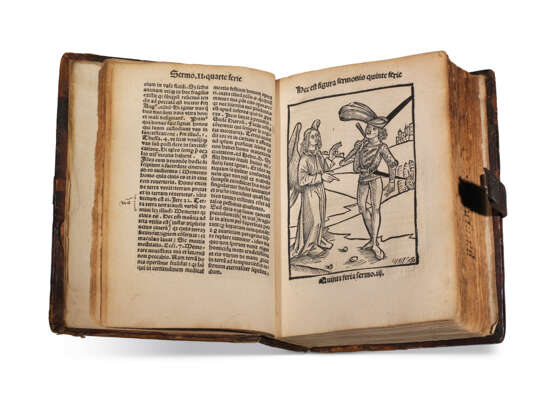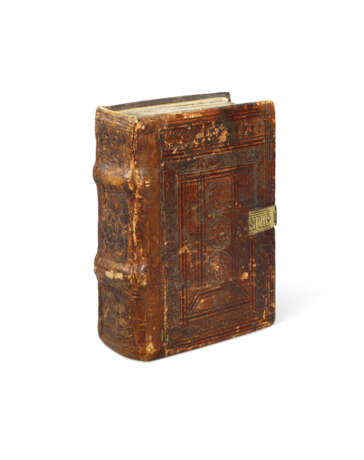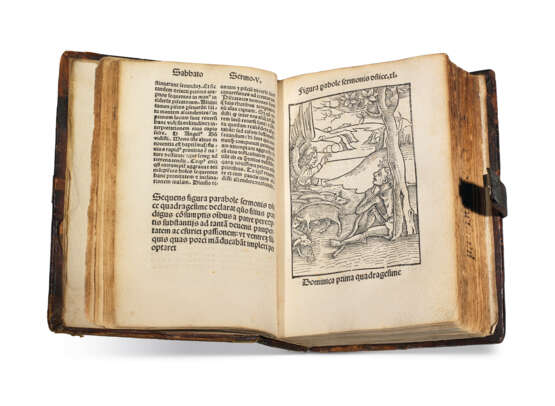ID 1360758
Lot 42 | Quadragesimale de filio prodigo
Estimate value
$ 5 000 – 8 000
A fresh copy of the illustrated second edition, with connection to Brant and Dürer. This edition reprints Furter’s 1495 edition and uses the same woodcuts except for one which is in reverse. Sebastian Brant provided a prefatory poem for this collection of Lenten Sermons by his friend Meder, a Franciscan who resided at Basel from 1495 to 1502. Meder was closely involved in the execution of this edition, requesting himself that Furter furnish the text with illustrations. The woodcuts are attributed to the Master of Haintz-Narr, Dürer’s main collaborator in the illustration of Brant’s famed Ship of Fools (GW 5041 and later editions) (Winkler). F. Winkler, Dürer und die Illustrationen zum Narrenschiff (Berlin, 1951). HC 13629; BMC III 785; BSB-Ink M-301; Bod-inc M-167; CIBN M-265; GW M22502; Goff M-422; Schreiber 4605; Schramm XXII p. 43; ISTC im00422000.
Chancery octavo (150 × 104mm). 231 leaves (of 232, without final blank). Illustrated with 18 woodcuts printed from 16 blocks, woodcut printer’s device (first and last couple of leaves with light edge-chipping mostly to a1, narrow browning at top edge of quires y and z). Contemporary blindstamped calf over wooden boards, clasp, fore-edge with manuscript title (neatly rebacked preserving original spine, later endpapers). Provenance: Bolzano(?) Reformed Minorite monastery (inscription) – sale, Christie’s, 12 December 2018, lot 162.
| Place of origin: | Switzerland |
|---|---|
| Auction house category: | Antiquarian books, Printed books |
| Place of origin: | Switzerland |
|---|---|
| Auction house category: | Antiquarian books, Printed books |
| Address of auction |
CHRISTIE'S 20 Rockefeller Plaza 10020 New York USA | ||||||||||||||
|---|---|---|---|---|---|---|---|---|---|---|---|---|---|---|---|
| Preview |
| ||||||||||||||
| Phone | +1 212 636 2000 | ||||||||||||||
| Fax | +1 212 636 4930 | ||||||||||||||
| Conditions of purchase | Conditions of purchase | ||||||||||||||
| Shipping |
Postal service Courier service pickup by yourself | ||||||||||||||
| Payment methods |
Wire Transfer | ||||||||||||||
| Business hours | Business hours
|





